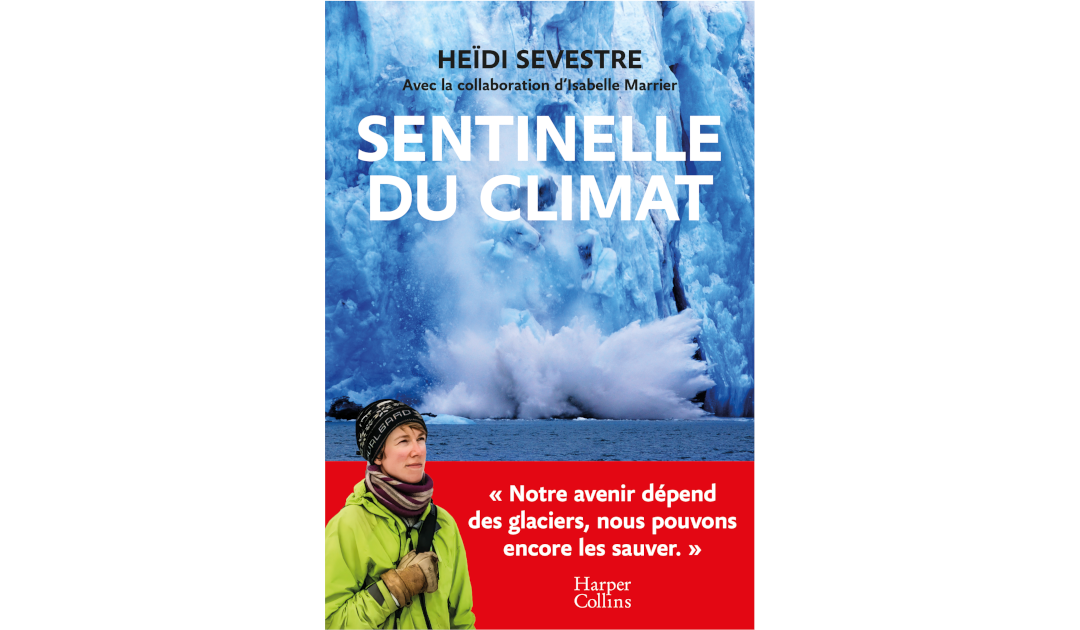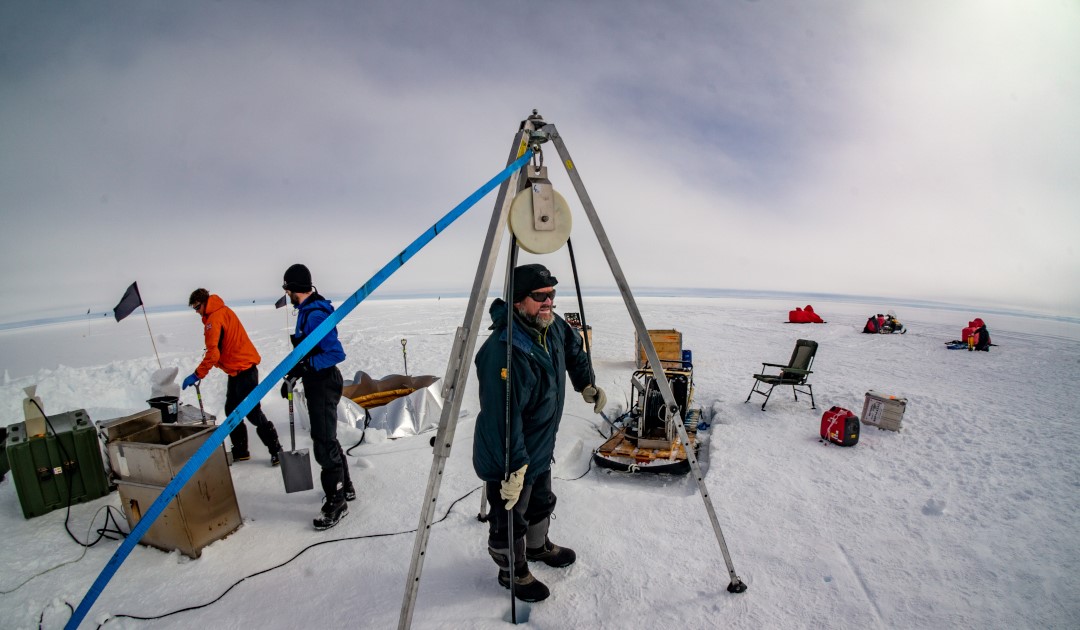
In a new book that makes us live the tension of the fieldwork, the motivating charge of the meetings, we have the exciting feeling to be a glaciologist for the time of a reading and to live behind the scenes the adventure of Heïdi Sevestre, with whom we cultivate ourselves along the story.
Opening the Climate Sentinel (Sentinelle du Climat en français) means getting ready to cross thresholds by following in the footsteps of glaciologist Heïdi Sevestre. We go from the solid state to the liquid state, from one pole to the other, from facts to emotions, from spleen to ideal, from the first steps of a young woman to the polar expeditions of a woman of action. As a student, she sees an icy world disappear, feeling the need to talk about it with precision and simplicity so that everyone understands the magnitude of the changes taking place.
“I am a scientist, this approach is based on facts, we must remain neutral. Then, I noticed when I was in conference with young people, or not so young, that people retained more the emotions, what they felt when they understood what was happening” she explains us in an interview.

Originally from the Alps, she grew up in the mountains, at the age when one begins to look for a path to follow, she discovered the history of the ice trade in the Rhone basin between the crest of the Alps and Marseille. We are dependent on the water cycle, she writes implicitly, in the past this ice was used to preserve food, today it is disappearing.
“In Svalbard, these last months, all the expeditions have been evacuated because the conditions were so dangerous. You have the impression of being on the front line, and then when you return to France at a time of year when we are still lucky enough not to be affected by climate change, people have doubts, there are questions… but it’s not bad, if there are questions, it means that there is a beginning of the search for an answer.”
During her studies, in Erasmus in Svalbard, she is caught in an avalanche. In Nepal, she is seized by the testimony of an old shepherd who survived a glacial flood. We feel with her the climate, the snow, the ice, alternating from rational to emotional, the reading is bewitching and instructive. We realize that she manages to keep hope in all circumstances.
“Scientists do not hide that what is happening is alarming and frightening, but we must also insist on the fact that we have not crossed all the tipping points of the cryosphere, so we can not give up.”

While learning glaciology, she has one goal in mind, to produce tangible information for the Intergovernmental Panel on Climate Change (IPCC), and wants to make a difference. Heïdi Sevestre will face the cold, become a doctor, and then an efficient science popularizer.
“I was lucky, no one put barriers in my way because I was a woman who was embarking on expeditions in glaciology. I may have lacked of examples, but in France we have one who is extraordinary, one of the pioneers, Madeleine Griselin. I am very grateful to her, thanks to her I knew that I was going to survive in glaciology.”

In the course of the story, her experiences do not leave her without reflection. She challenges her reader, gives him answers, the story bubbles with energy. We visit the backstage of glaciology, from its contradictions to the joy of graduation to the feeling of losing loved ones. She physically witnesses the state of health of the glaciers of the Antarctic Peninsula, and travels in spleen. She is also concerned about the carbon footprint of research.
“It’s something we think about every day, when we’re scientists, we’re the first to say we need to decarbonize the economy, communities are reducing their emissions. When we go to the Arctic or Antarctic, we rely heavily on fossil fuels. There are solutions being put in place, for example Lab 1.5 is helping research institutes calculate their footprint.”
In the book we are often spectators of a disaster in fabulous landscapes. A documentary production company contacted her to shoot a series of films on glaciers. She believes that it is necessary to make those who are disappearing speak and addresses a large audience. To envision the future she is inspired by Andri Snaer Magnason author ofOn time and water.
“He asks the question of time to understand the concepts of climate change, polar ocean acidification, permafrost thawing, and lists three ingredients for the future, ethics, algebra and poetry. I think we will need science and its ethics to have factual information, but also poetry. We need wonder in our daily lives, in these polar landscapes nature is extraordinary. Poetry is an integral part of our ability to reinvent a desirable future.”
Images : All rights reserved
Camille Lin, PolarJournal
Link to publisher: HarperCollins
Learn more about this topic:





